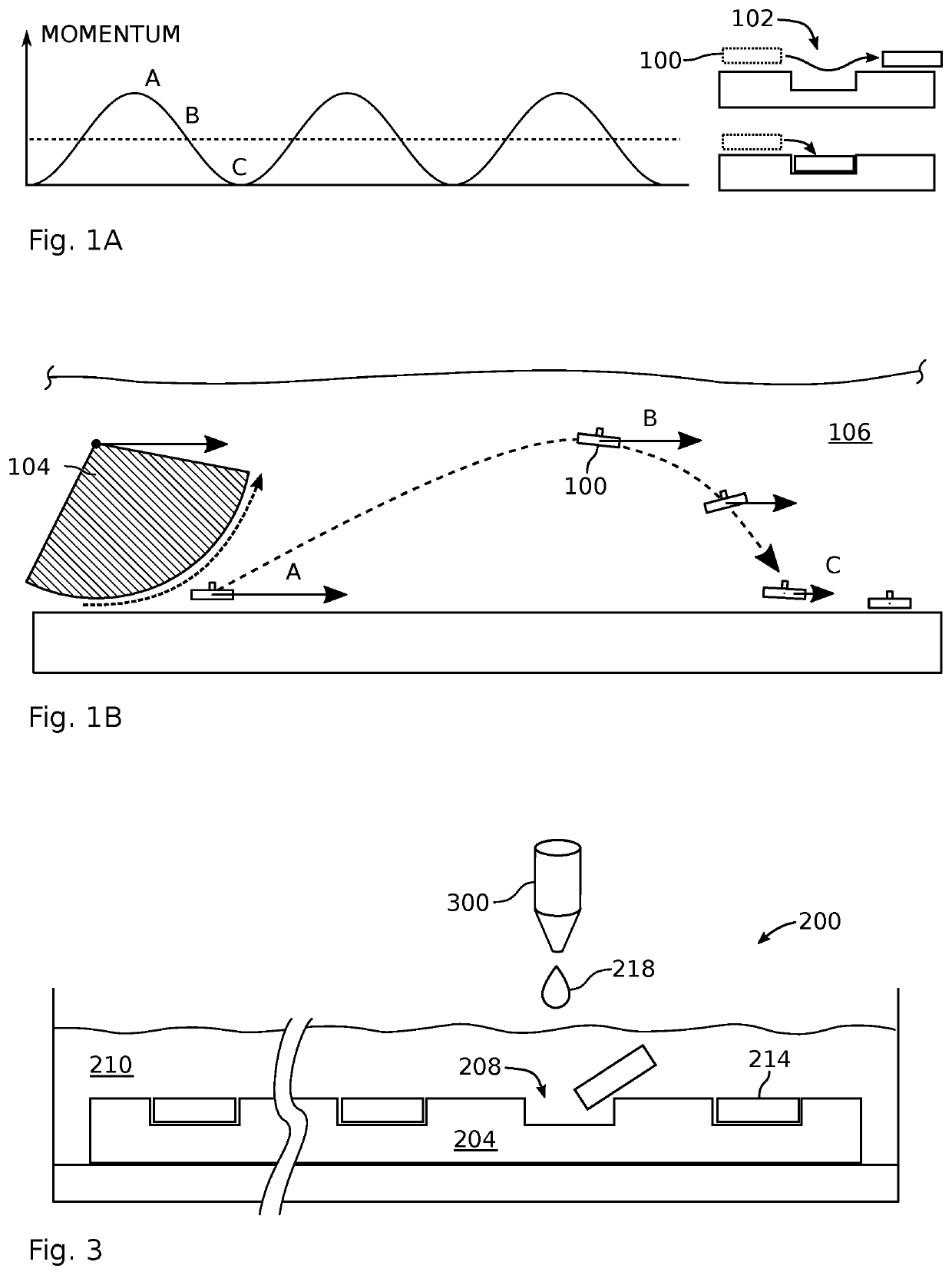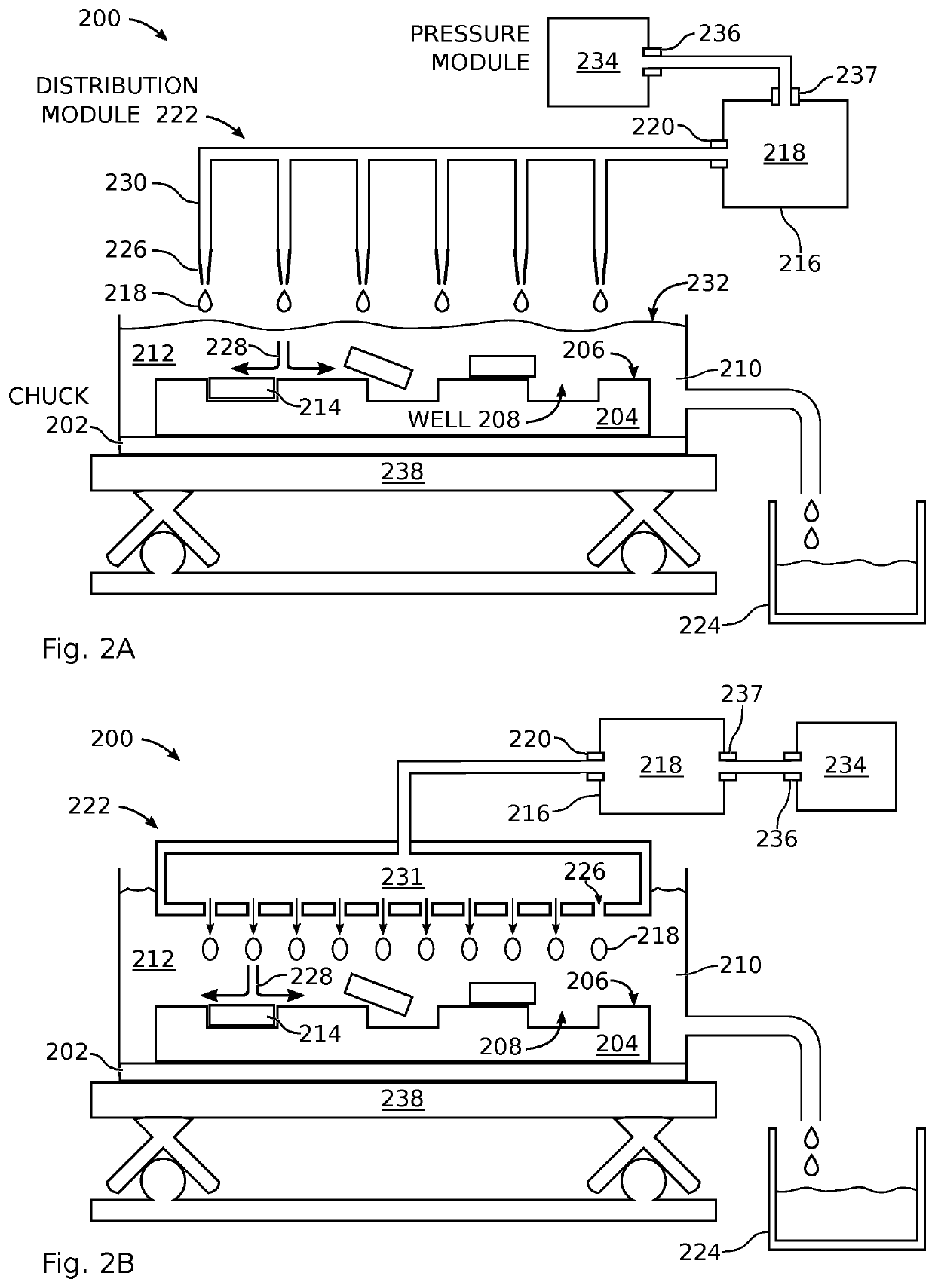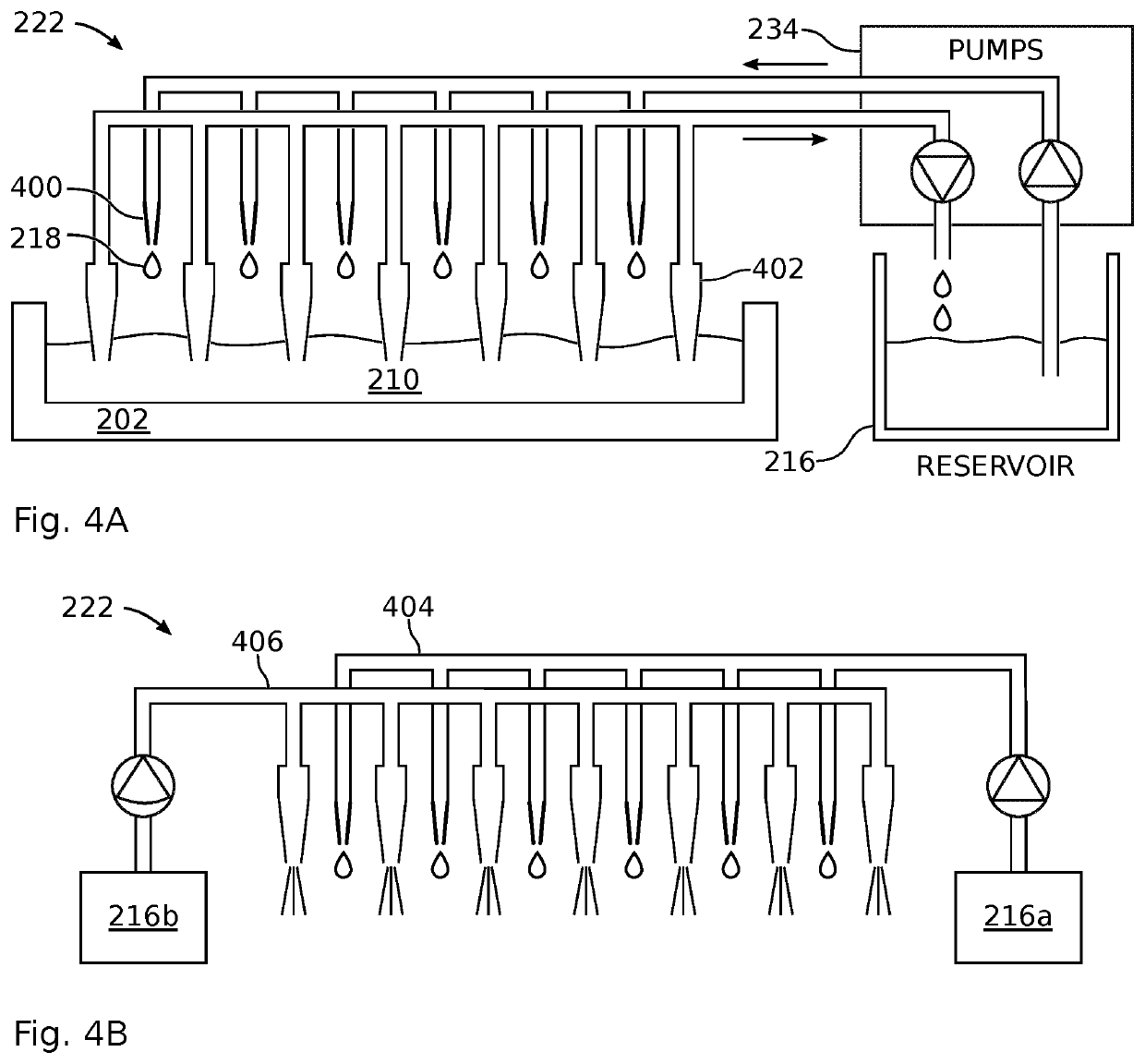Method for Microperturbation Assembly
a microperturbation and assembly technology, applied in the field of fluid assembly systems, can solve the problems of difficult to achieve the flow velocity uniformity and microcomponent dispensing scheme necessary for a high yield over the whole assembly substrate, and take several hours to complete, etc., to achieve simple and low-cost infrastructure, maximize assembly yield and speed, and cost-effectively scalable to large areas
- Summary
- Abstract
- Description
- Claims
- Application Information
AI Technical Summary
Benefits of technology
Problems solved by technology
Method used
Image
Examples
Embodiment Construction
[0032]FIGS. 2A and 2B are partial cross-sectional views of an emissive substrate microperturbation fluidic assembly system. The system 200 comprises a substrate chuck 202 for engaging an emissive substrate 204. The emissive substrate 204 has a top surface 206 patterned to form an array of wells 208. A liquid suspension 210 overlies the emissive substrate top surface, comprising a first liquid 212 and emissive elements 214. The system comprises a reservoir 216, which contains a perturbation medium 218 and has an outlet port 220. The perturbation medium 218 may be the first liquid 212, a second liquid, or a gas. Optionally but not shown, a liquid perturbation medium may include emissive elements. One example of an emissive element is a light emitting diode (LED). Although not light emissive, other two-terminal surface mount elements include photodiodes, thermistors, pressure sensors, and piezoelectric devices. The emissive element may also be referred to as a surface mount emissive el...
PUM
 Login to View More
Login to View More Abstract
Description
Claims
Application Information
 Login to View More
Login to View More - R&D
- Intellectual Property
- Life Sciences
- Materials
- Tech Scout
- Unparalleled Data Quality
- Higher Quality Content
- 60% Fewer Hallucinations
Browse by: Latest US Patents, China's latest patents, Technical Efficacy Thesaurus, Application Domain, Technology Topic, Popular Technical Reports.
© 2025 PatSnap. All rights reserved.Legal|Privacy policy|Modern Slavery Act Transparency Statement|Sitemap|About US| Contact US: help@patsnap.com



